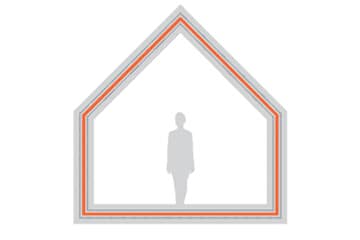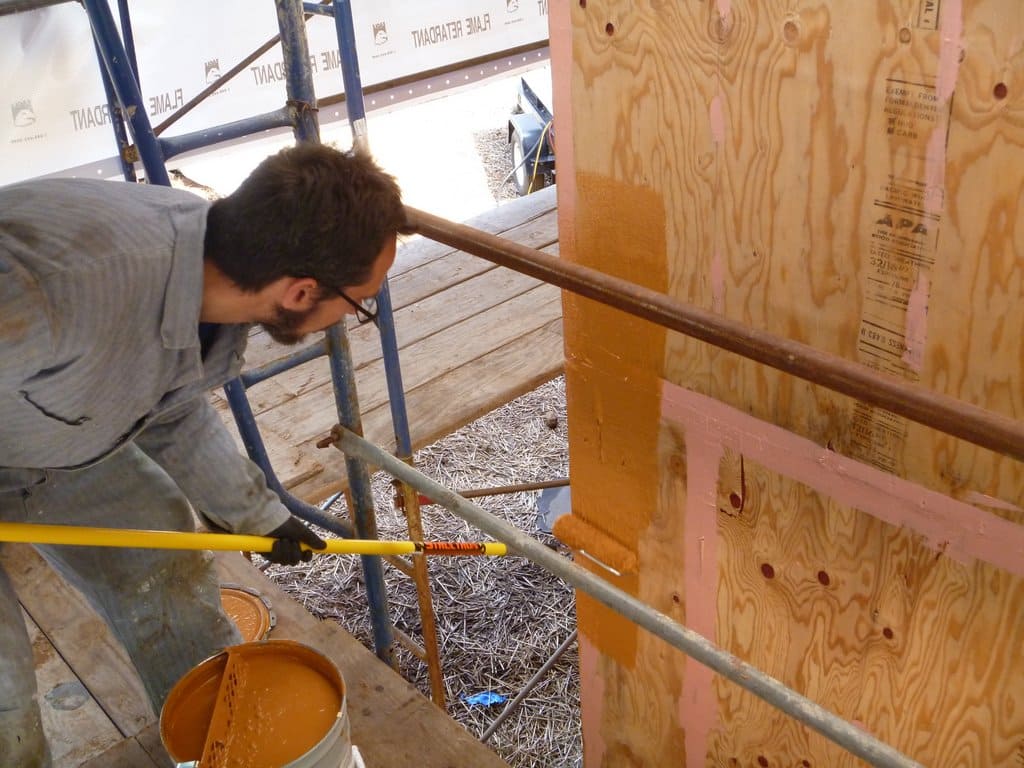
WRB
While a building’s cladding provides the first line of defense against bulk water intrusion, the WRB or water-resistive barrier, represents the final stand against liquid water. The WRB often, though not always, also serves as the air barrier.
Most of the WRBs that we employ in the maritime Pacific NW are vapor open; they stop water in its liquid form but allow water in its vapor form to move through, increasing the drying capacity of the assembly.

Fluid-applied WRB at Karuna House
Examples of WRBs include fluid-applied membrane (Karuna House), wax-impregnated wood fiber (Pumpkin Ridge Passive House), building paper (Glasswood Passive House Retrofit), and OSB with a proprietary WRB coating (Madrona Passive House).
